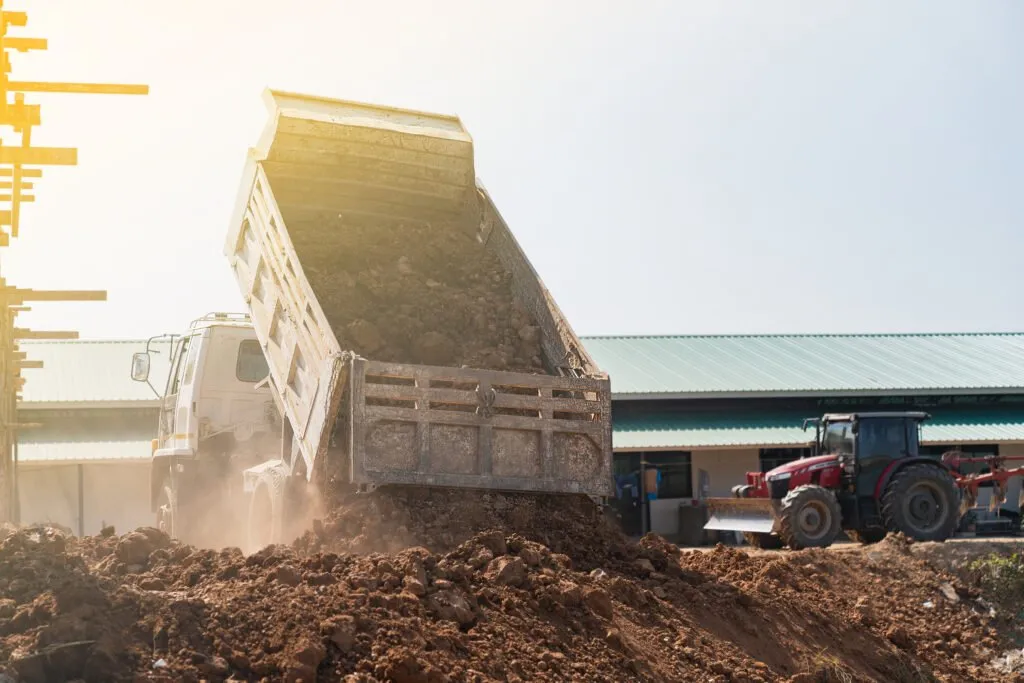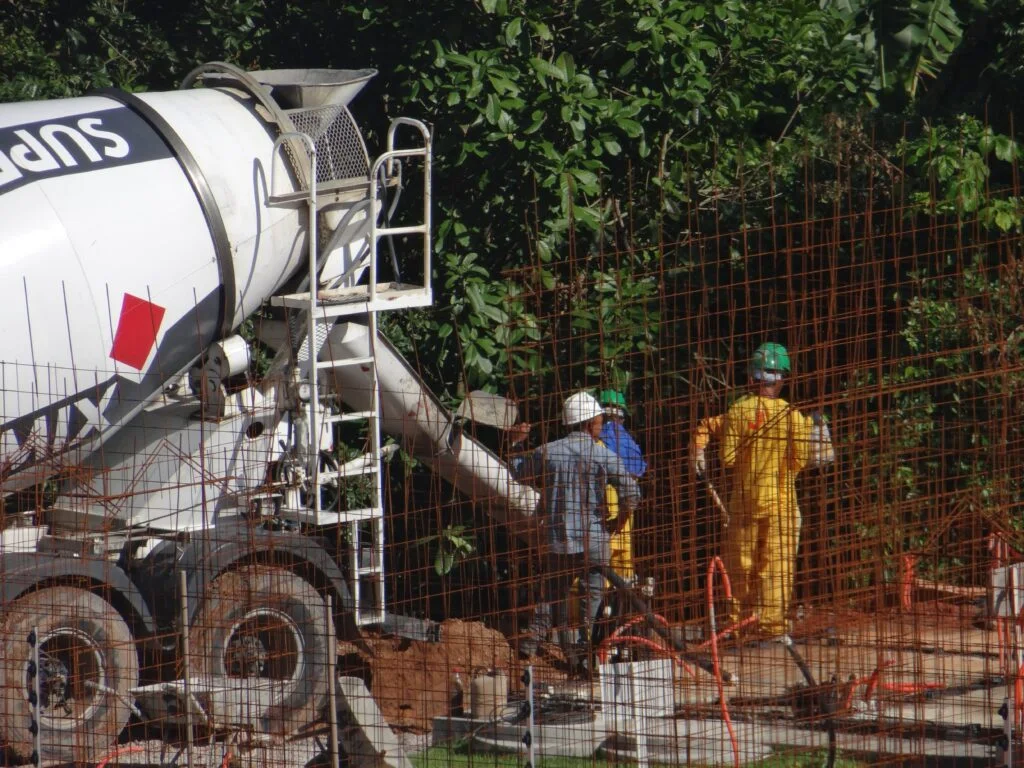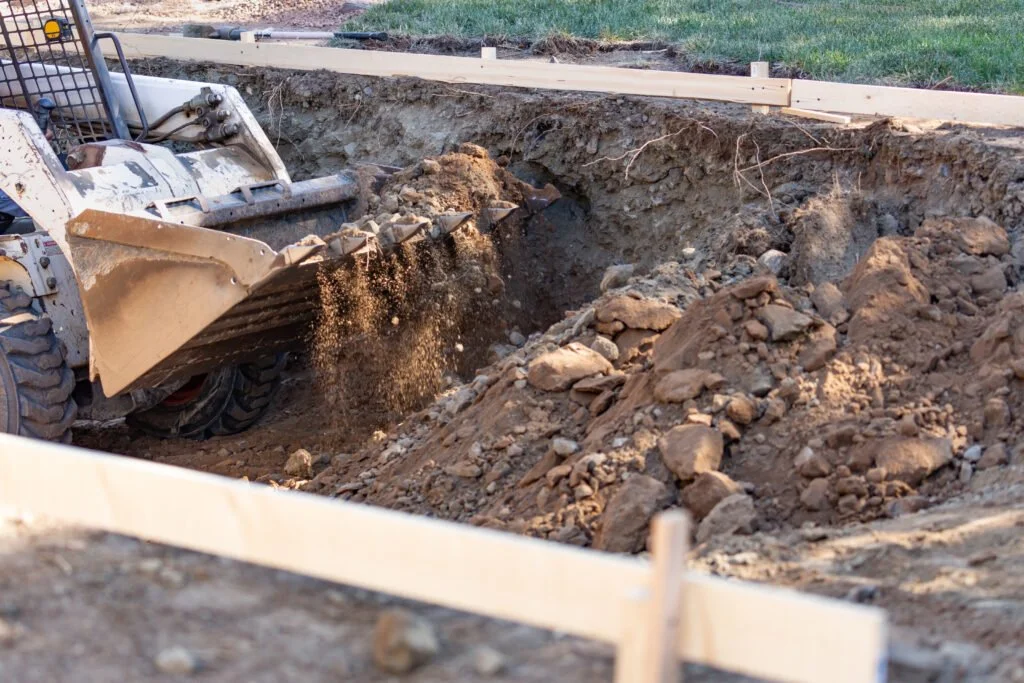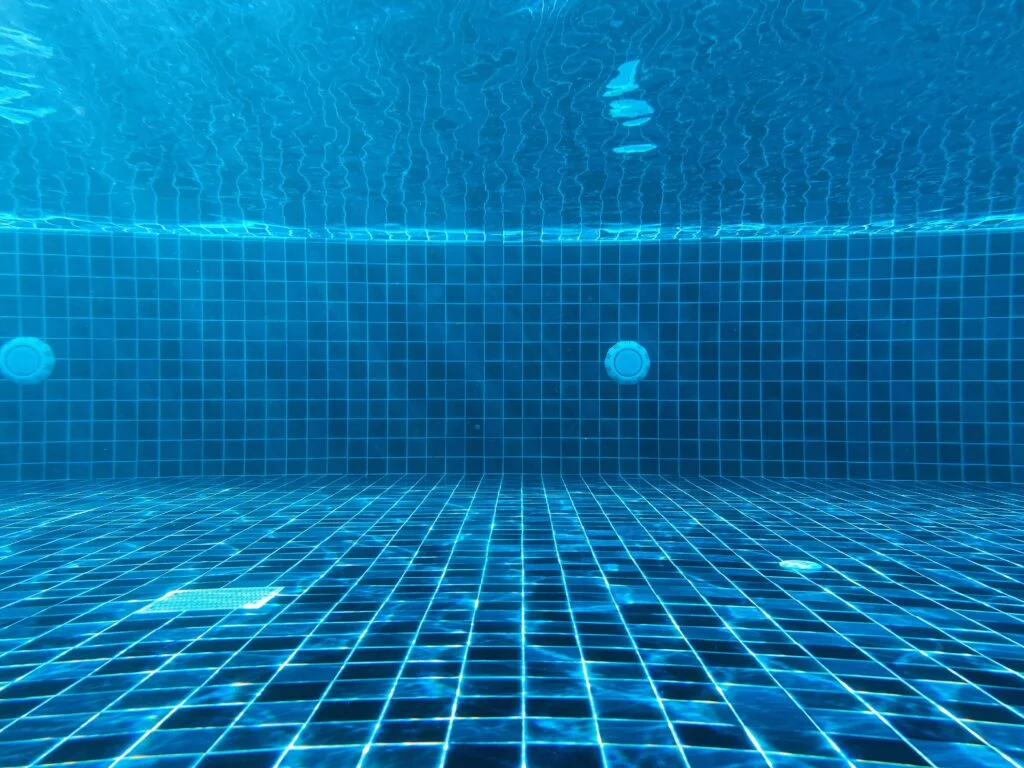Do you have filled in pool problems? You’re definitely not alone. Homeowners choose to fill their in-ground pools for a number of reasons, from removing safety hazards to reducing maintenance costs.
But often, filling in a pool creates issues. Among the most pressing filled-in pool problems has be to sagging, swampy soil due to water retention and settling.
If a pool isn’t removed and filled in properly, homeowners may end up with a low spot — or even a bog — in their backyard.
It’s a problem that’s not cheap or easy to fix. And when it comes to selling your home, there aren’t a lot of potential buyers that want to deal with a swampy mess.
Here’s what every homeowner should know about filled in pool problems.

10 Reasons to Fill In a Pool
For some, an in-ground pool is a status symbol or sign of luxury living. But for others, an in-ground pool may represent a safety hazard, excessive maintenance costs, or simply take up space in the yard that could be put to better use.
Here are 10 reasons why a homeowner might want to fill in an in-ground pool:
- You’re not using it; perhaps your kids grew up and moved away, or you’ve simply lost interest
- The pool presents a safety hazard to children, pets, or the elderly
- You’re sick of paying to keep the pool clean and running; from weekly cleanings to chemicals, electricity and water bills, pools cost anywhere from $1,200 to $5,000 per year just to maintain (and that’s not even including the inevitable repair costs!)
- Since we mentioned repairs, let’s touch on how expensive pool fixes can be; according to HomeAdvisor, pool repair costs run from $239 to over $1,000, with an average cost of $659
- It’s hard to keep up with retrofitting and regulations, such as drain covers and safety fencing, but an unsafe pool presents a major liability risk
- The pool takes up space you’d rather use for something else, like a lawn, garden or shed
- You’re tired of paying expensive liability insurance
- The pool has a leak and it’s wasting water
- It costs too much to heat, but it’s too cold to use so it just sits there for most of the year
- It detracts from your home’s appeal and value; an unsightly, outdated or dilapidated pool isn’t exactly a draw when it comes to time to sell your home
Can You Fill In an In-ground Pool?
When a pool is sitting empty and creating a safety hazard — or you’re paying hundreds of dollars a month in maintenance, water, and electric bills for something that doesn’t get used that often — filling it in just makes sense.
But no matter why you want to fill in a pool, one thing’s for sure: The process is complex and if it’s not done right, problems ensue.
How much does it cost to “do it right”? According to Home Advisor, using a professional service to remove a pool costs from $2,700 to $19,000, with a fill-in service averaging about $5,000. For most homeowners, that’s a huge expense and one that comes right of your pocket.
Due to the high cost of hiring professionals to remove or fill in an in-ground pool, homeowners may try to do the job themselves.
While it may be possible, a partially removed filled-in pool must be disclosed to future home buyers, which can negatively impact the future value of your home.
Should I Fill My Pool With Dirt?
For many homeowners, the decision to fill in a pool makes sense but comes with many questions attached. How does the filling process work? Is dirt the best fill material? What about concrete?
Let’s look at two different methods of filling a pool: Partial removal and complete removal.

Partial In-Ground Pool Removal
Partial removal is less costly than complete removal, and can (sometimes) be a DIY project. First, drain the pool of as much water as possible.
If the water contains chlorine or other chemicals, be sure the water drains somewhere that won’t cause environmental harm.
Using a sledgehammer or jackhammer, punch holes through the bottom of the pool to create drainage. It’s important that water that settles into the pool in the future can drain freely, so create as many holes as you can.
Next, demolish the pool’s top layer. Usually, about 36 inches must be removed, as the edge must be well below the surface of the ground.
Place the rubble in the bottom of the pool, making sure to leave drainage holes clear.
Now backfill the pool with gravel, sand, fill dirt, and topsoil. Remember: The fill will settle and sag — a lot — so tamp it as you go. You may use a hose to consistently soak, then tamp, the dirt as you fill to help speed the settling process.
Even if you use the “water tamping” method, the soil will continue to settle over time. You may want to overfill the old pool and keep watering and tamping for several weeks, adding dirt as needed, before laying sod or planting grass.
Complete In-Ground Pool Removal
Removing an in-ground pool completely is a bit more complicated. In most cases, this isn’t a DIY-type project. The process starts by draining the water from the pool in an environmentally safe manner.
Then, all pool materials must be demolished, from fiberglass and concrete to rebar and liner. Usually, a backhoe must be brought in to do this heavy work.
All the demolished materials must be hauled away and disposed of properly.
Next, the former pool area must be filled in and compacted. Since nothing is buried in the pool area after complete removal, the risk of sagging, boggy ground is minimized.
However, some municipalities consider the area unusable for dwellings after removal. Other cities require that an engineer direct the filling and compacting. They can then test for density and review the area’s safety and suitability.
What is the Best Material to Fill in a Pool?
In many cases, the lowest level of the old pool should first be filled with a layer of rock or crushed grave, then topped with a layer of sand.
Most of the hole can then be filled with compacted fill dirt. Finally, the top two feet or so can be filled with screened topsoil. As a general rule, use 80 percent compacted fill to 20 percent topsoil.
What about concrete? It costs much more to fill a removed or partially removed pool with concrete; according to Home Guides, most pool companies will refuse to fill with concrete for this reason.
It may be possible to fill part of the pool area with broken concrete from the demolished pool, before filling it with gravel, sand and dirt. In some cases, you may choose to lay concrete slabs over the filled area. Expect this to cost from $4 to $8 per square foot.

What Do You Do With a Filled In Pool?
Now that the pool is filled in, what can you do with it? Keep in mind that you can only legally build over completely removed pools, not over partially removed pools.
Laws and regulations vary from city to city, but as a general rule, no dwellings are allowed on partially filled pools. You can usually use the area for lawn, flower beds, gardening, and, in some cases, sheds.
However, if a pool wasn’t filled in properly, you may face a number of challenges. Let’s review a few common filled-in pool problems.
Using the Wrong Pool Removal Method
When filling an in-ground pool, choosing the right method is key. While a partial removal costs less and may be possible to DIY, it may not be the best choice.
The area can settle, retain water and become boggy, and you can’t build on it. Plus, you must disclose a partial removal to potential home buyers, who may see it as a deal-breaker.
Full removal is more involved — and most expensive. But the results may be worth the extra cost. Generally, the job must be done by professionals and, often, an engineer will sign off on the work.
Partial Pool Removal Woes
Partial pool removal and fill-in may seem simpler… at the time. But over time, the old pool may retain water if drainage isn’t adequate. The area will get swampy, the fill dirt will settle and you’ll end up with an unstable bog.
No one likes dealing with seeping, swelling, or sinking areas in the yard. Potential home buyers really don’t like it. If your partial removal isn’t up to code, you may also run into problems with the municipality.
Using the Right Tools and Equipment
Many homeowners choose to fill in their pool themselves. But even DIY jobs require the right tools and equipment.
While you can rent tools used to fill in a pool, much of the equipment is heavy-duty. These machines may require some (or even extensive) experience to operate, such as a bulldozer or plate compressor.
If you’re not well-versed in operating heavy machinery, it’s all too easy to damage other parts of your yard or home. For instance, you may break pipes, crush irrigation lines or damage a septic system.
All these repairs add up. Worse, it’s easy to damage electrical or gas lines, creating safety hazards.

Can You Restore a Pool that was Filled In?
If the filled-in pool is a real eyesore — or you just really want a pool in the yard again — you may be able to re-install a pool in the same place.
According to Home Guides, the cost for a professional pool reinstall runs from about $28,000 to $55,000. If you attempt to DIY, the cost averages about $11,000.
The cost of restoring a pool to a filled spot is the about same as installing from scratch. Much of the work is the same, as the filled-in pool will need to be emptied and debris hauled away before the hole for the new pool can be dug.
Overall, whether you choose partial or full removal, filling in a pool is a huge undertaking… and it’s not cheap. Plus, if the job isn’t done right, you’ll likely have a host of filled-in pool problems on your hands.
From settling fill to a boggy backyard, swelling soil to safety hazards, a filled-in pool can create numerous issues. Worst of all, when it’s time to sell your home, a filled-in pool can be a deal-breaker for potential buyers.
After all, there aren’t many homebuyers who want to take on a complicated (and expensive) project like fixing a botched pool fill-in.
Fortunately, you do have options: Sell to HomeGo. We buy houses as-is, pool problems included. You won’t need to worry about disclosing to potential buyers or shelling out money, time and effort to fix a bad fill job.
HomeGo provides a transparent, on-the-spot offer that won’t change. Our agents take the time to learn about your needs, assess your home with an in-person walk-through, and provide a simple, firm offer. That’s all you need to sell your home… even with filled-in pool problems.




